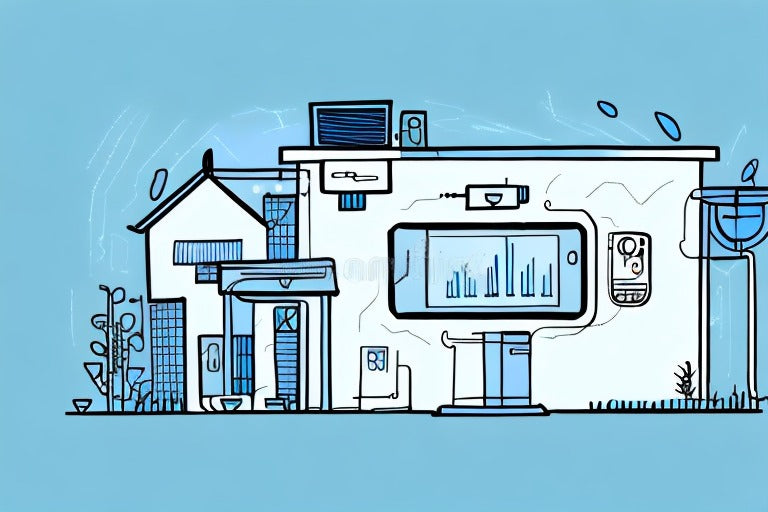
How Many Kilowatt-Hours Does An Average House Use?
|
|
Time to read 5 min
|
|
Time to read 5 min
Table of content
Before we get into the specific number of kilowatt-hours consumed by an average house, it is important to understand what kilowatt-hours (kWh) actually represent and how they relate to energy consumption. In simple terms, kilowatt-hours measure the amount of electricity consumed over a certain period of time. It is the product of the power (measured in kilowatts) and the time (measured in hours) for which the power is consumed.
When it comes to household energy usage, kilowatt-hours are a useful metric to assess the amount of electricity a house consumes on a monthly or annual basis. By knowing the average kilowatt-hours consumed, homeowners can gain insights into their energy habits and possibly identify areas where energy-saving measures can be implemented.
It's worth noting that kilowatt-hours are commonly used by utility companies to determine electricity consumption and bill customers accordingly. Understanding how kilowatt-hours are calculated can help consumers make informed decisions about their energy usage and potentially lower their electricity bills.
The concept of kilowatt-hours extends beyond residential settings. Industries, businesses, and even entire countries rely on kilowatt-hours to measure and manage their energy consumption. By tracking kilowatt-hour usage, organizations can optimize their energy efficiency, reduce costs, and minimize their environmental impact.
Several factors contribute to the overall energy consumption of a household. Understanding these factors can provide a clearer perspective on why there is variation in kilowatt-hour usage among different homes:
Most sources will give an estimate in the region of 10,000 kWh consumed annually for an average house, but this figure can of course vary depending on factors such as location, climate, and household size. So to provide a more detailed breakdown, let's consider different house sizes:
In the case of a small house or flat, typically less than 1,000 square feet, the average annual electricity consumption can range from 8,000 to 10,000 kilowatt-hours. These homes usually have fewer occupants and require less energy for heating, cooling, and powering appliances.
A medium-sized house, ranging from 1,000 to 2,000 square feet, generally consumes an average of 10,000 to 14,000 kilowatt-hours per year. These homes accommodate a moderate number of occupants and likely have a greater number of appliances and devices.
Large houses, exceeding 2,000 square feet, tend to consume an average of 14,000 to 18,000 kilowatt-hours annually. These homes often have a larger number of occupants and require more energy for heating, cooling, and powering various appliances and electronics.
Appliances play a significant role in household energy consumption, particularly when it comes to kilowatt-hour usage. Certain appliances consume more energy than others, contributing to higher overall usage. Here are a few examples of appliances and their estimated average monthly kilowatt-hour consumption:
These figures may vary based on the efficiency of the appliance and the frequency of usage. It is important to consider these numbers when assessing your overall kilowatt-hour consumption and identifying potential areas for energy-saving measures.
Another factor that influences household energy consumption is the change in energy needs throughout the year. Seasonal variations in temperature, daylight hours, and holiday activities can result in fluctuations in kilowatt-hour usage. Here are a few examples:
Reducing kilowatt-hour consumption not only benefits the environment but can also result in significant cost savings for homeowners. Here are some practical tips to help you reduce your home's energy usage:
By implementing these energy-saving practices, homeowners can take steps towards reducing their kilowatt-hour consumption and making their homes more environmentally friendly.
Another option for cost-saving is solar power. Solar panels and kits are flexible tools for capturing and storing solar energy, offering an alternative during power interruptions or whenever power is needed. By utilizing the sun's energy, they play a vital role in diminishing carbon emissions. Their self-sustaining nature eliminates the need for conventional fuels, thereby reducing long-term expenses. Beyond their eco-friendly benefits, solar panels and kits boast versatility, facilitating their use in an array of situations. From energizing RVs and enhancing camping experiences to powering outdoor events and remote work sites, these portable systems provide reliable energy wherever it's required.
After getting an early start in the world of computing with C64 & Amiga computers, Pete now spends much of his spare time in PC VR and dabbling in game development. He also has a strong interest in film, photography and music.
Among other endeavours, he previously worked in a Maplin store, so it was a no-brainer when the opportunity arose to work on the modern incarnation of Maplin online. Besides writing for the blog, Pete works alongside the Maplin team to help keep the online store running smoothly.